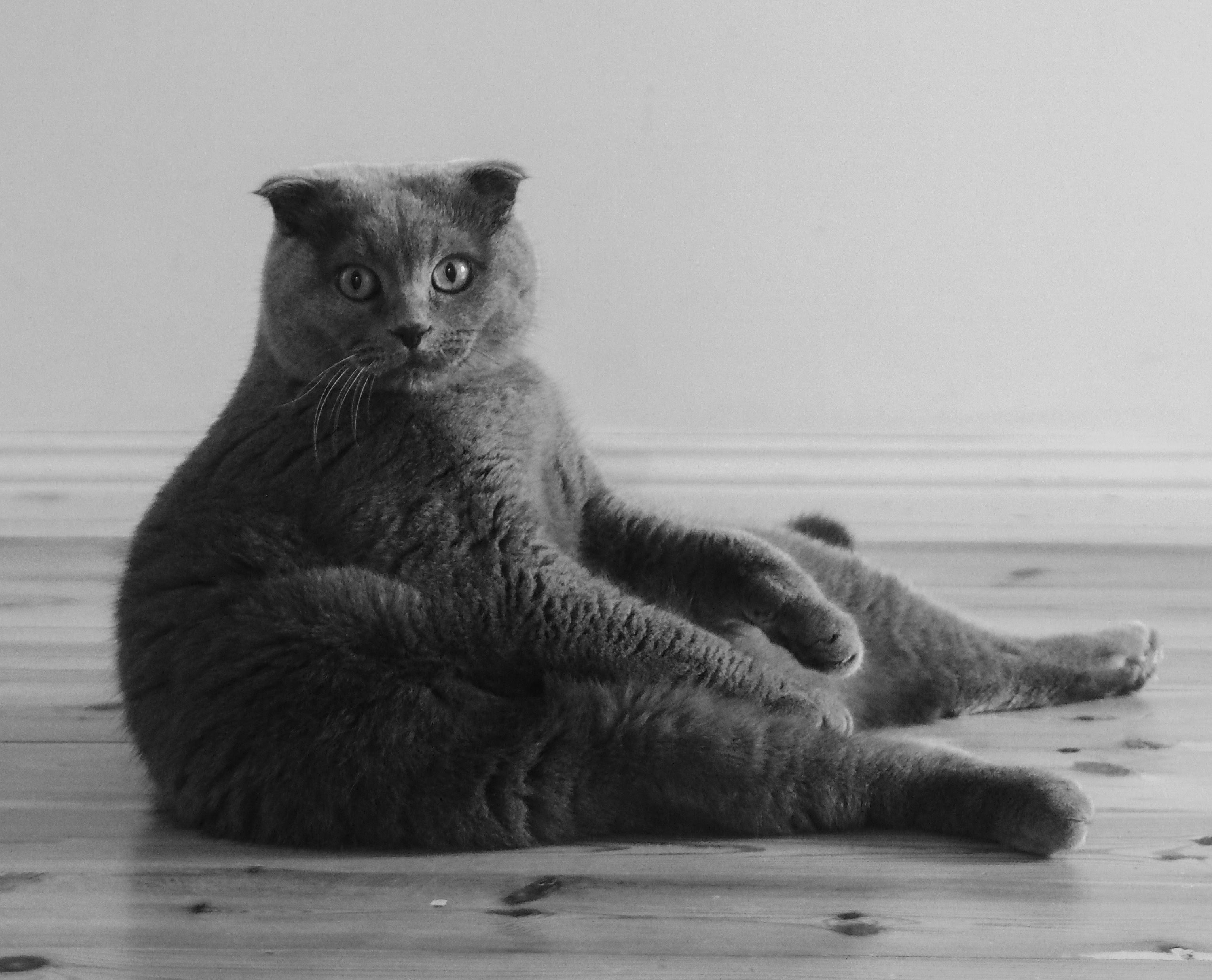People share the quirkiest things their pets do and it's both hilarious and heartwarming
We asked our people to share their pet's weirdest antics and our audience delivered.

Silly doggo.
Pets are good for many reasons, from companionship and comfort to security and snuggles. But they can also be highly entertaining members of the family.
One saving grace during the pandemic was getting to spend lots of time with our pets and witnessing all of their silly, quirky antics all day long. How many times have you wished you could hear what was going through your cat or dog's brain as they do things that defy logic. The cat who likes to chew on people's hair while they sleep—why? The dog who spins around in a circle ten times before relieving themselves—why?
The reason animals do what they do may be a mystery, but that doesn't make it any less enjoyable to hear about their silly habits. We asked our Upworthy audience to share the quirkiest things their pets do, and people delivered big time.
Check out some of the hilarious things people's pets do, as well as the heartwarming memories of furry friends who have crossed the Rainbow Bridge:
"My dog is obsessed with toilet paper rolls. Whenever there’s an empty one in the trash, she digs it out. Then she carries them around the house or takes them outside and puts them under her 'tree of recyclables.' — Michelle C.

TV-loving pup
"Memorizes commercials with dogs in them by their song. If she hears the song start she comes running in from another room to attack the TV." – Angela S.
"My Border collie hates numbers. We’ve tested it with loads of words and then randomly throw in a number and he goes crazy. He knows his numbers up to 100, I’m not sure where the habit developed from but he hates numbers so much we avoid saying them.  " – Holly L.
" – Holly L.
"My puppy steals bras and socks on laundry day and runs around the house with them." – Maggie M.
"One of my dogs (big lab mix) was scared of the kitchen floor. I had to lay a carpet runner from the carpet to the back door so he could get out. Sometimes he would get stuck in there and freeze.I had to physically slide him across the kitchen to the carpet. I loved him." – Katie D.

Lounging-but-alert kitty
Photo by Caleb Woods on Unsplash
"My cat always watches the water go down when I flush the toilet. Literally jumps up on the seat to watch it go down the pipe.  " – Tara L.
" – Tara L.
"My cat Westley loves spinach, broccoli, cucumber, bell peppers and squash. If I’m preparing any of them he goes berserk begging for a piece. When I give it to him he carries it off under the dining room buffet to eat it. Always finding broccoli florets down there." – Amy D.
"I just lost my girl Puffin. Every night she'd snuggle in the little crook in my arm like a stuffed animal and sleep there with me all night. She was terrified of plastic bags and would run and hide when we changed the bins. She also loved waiting for me to get out of the bath sitting on the side of the tub waiting as long as it took for me to get out." - Dallas T.
"Although my baby Jerome is no longer with us, he LOVED the swivel barstools. He would get as far away as possible and make a hard run to them, jump up on them and spin. He got up to about 5 or 6 revolutions." – Bonnie G.

Sleepy doggo.
Photo by Rebecca Campbell on Unsplash
"She gets upset if I sneeze and rushes to my side crying as if she thinks I’m either in pain or hurt (cat)." – Patty B.
"My dog thought his collar was his clothes. If we took it off for any reason, he would run and hide until we put it back on. He also would never go outside without a leash. He would stick his nose out of the door and sniff the air, but as soon as his leash was on he was raring to go. Still miss him. Goldens are the best." – Mike R.
"We lost our little Zoe kitty three week ago  but she LOVED to watch stuff boil on the stove. If I was cooking, she wanted to be picked up so she could watch.
but she LOVED to watch stuff boil on the stove. If I was cooking, she wanted to be picked up so she could watch.  She also enjoyed her 'coffee' every day that my daughter gave her. Zoe’s coffee was a minuscule dollop of Rediwhip and she would sit so perfectly and wait patiently for her coffee.
She also enjoyed her 'coffee' every day that my daughter gave her. Zoe’s coffee was a minuscule dollop of Rediwhip and she would sit so perfectly and wait patiently for her coffee.  " – Julie S.
" – Julie S.
"My dog likes to spill her food all over the floor (knocking it out of her bowl) so she can eat it piece by piece across a larger surface. We like to say she doesn’t like her food to touch." – Nicole A

Derpy kitty
Photo by [kaˈmeːli̯ə] ... on Unsplash
"Mine hunts worms. He sniffs them out, gently digs them up, rolls on them, pulls them out a little, rolls on them some more and then may or may not eat the smoothed worm." – Amy S.
"My female mini dachshund sits on her older brother’s (male dachshund’s) head like it’s a little stool." – Dirk B.
"I would always put our undies at the bottom of the laundry basket because our pug would stop at nothing to dig them out and run thru the house. But, only when we had company. Not to mention he was so short, he'd often trip over them. He was a pervert." – Twila P.
"When my dog was alive, he did not like to leave his 'droppings' in sight. So, he would back his rear up to the nearest bush, go, and then cover what he could with dirt. Also, once, when I was detained too long, and had left him in the house, he squeezed (he was a Keeshond, medium sized dog) thru the cat door, and did his business in the cat sandbox. I didn’t teach him any of these things…." – Judy J.

Suspicious doggo.
"My grand fur baby Scratch would often get up on the piano while my granddaughter was playing it. Now, Scratch plays the piano for treats. Often for short periods but sometimes he plays for several minutes. He does this on his own looking for the treat reward but will also do it on demand when you ask him to play the piano he will. He brings us such joy." – Kim F.
"We have a plot hound. We keep an old towel by his dish because ever since he was a puppy if he doesn’t feel like eating right away, he takes the towel & covers his food until he is ready to eat." – Pat B.
"First dog ate all the backs out of all my right shoes. Never ever left shoe. Cat only drank running water. We had to leave a faucet dribbling all the time. Current hound has figured out how to open a clam shell plastic container and eat whatever is in there without breaking the seal." – Sandy L.
"My cat loves my husband's dirty socks. He sleeps on them, rolls on them and sometimes he bites them and tries to kill them. He is a little weirdo!" – Leona C.
"One cat crawls under blankets and throw rugs, the other cat stands on top of her and looks like she’s surfing as the below cat wiggles." – Kathleen B.
- 13 pet owners share the funniest thing they’ve accidentally taught their pets to do. ›
- Flying squirrel repeatedly fakes its own death with a broom handle and people are losing it ›
- 16 people share the weird 'quirk' their pet does that no one believes ›
- Tiny dog goes ballistic over blueberries and it's a must-see - Upworthy ›
- Scottish shepherd shares how his border collies round up the flock - Upworthy ›

